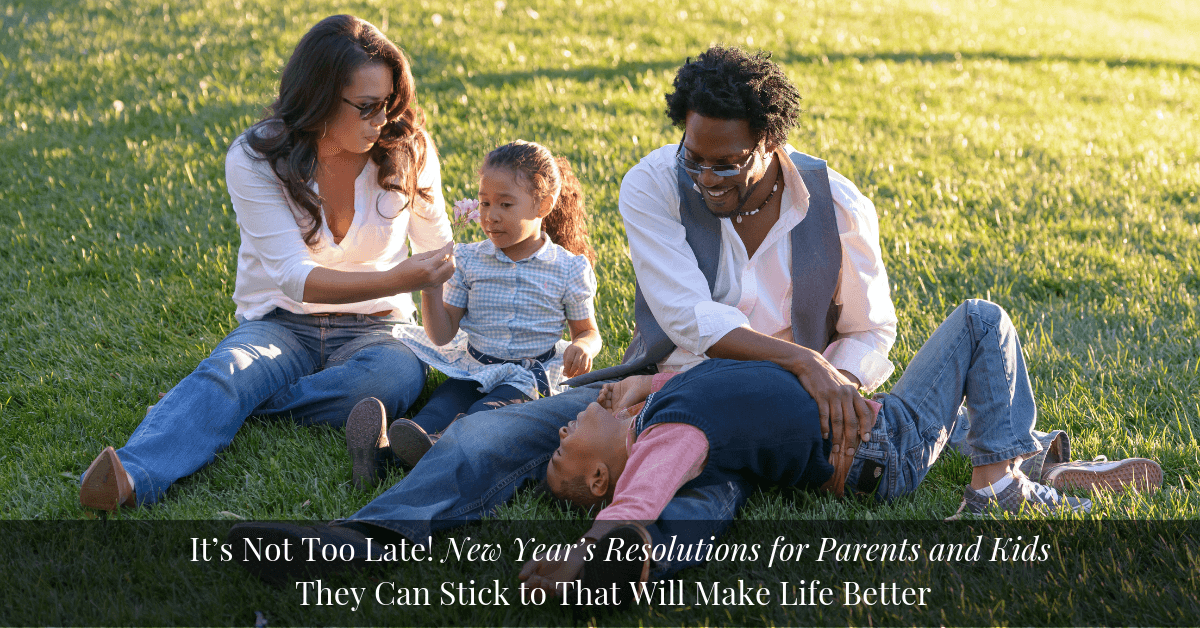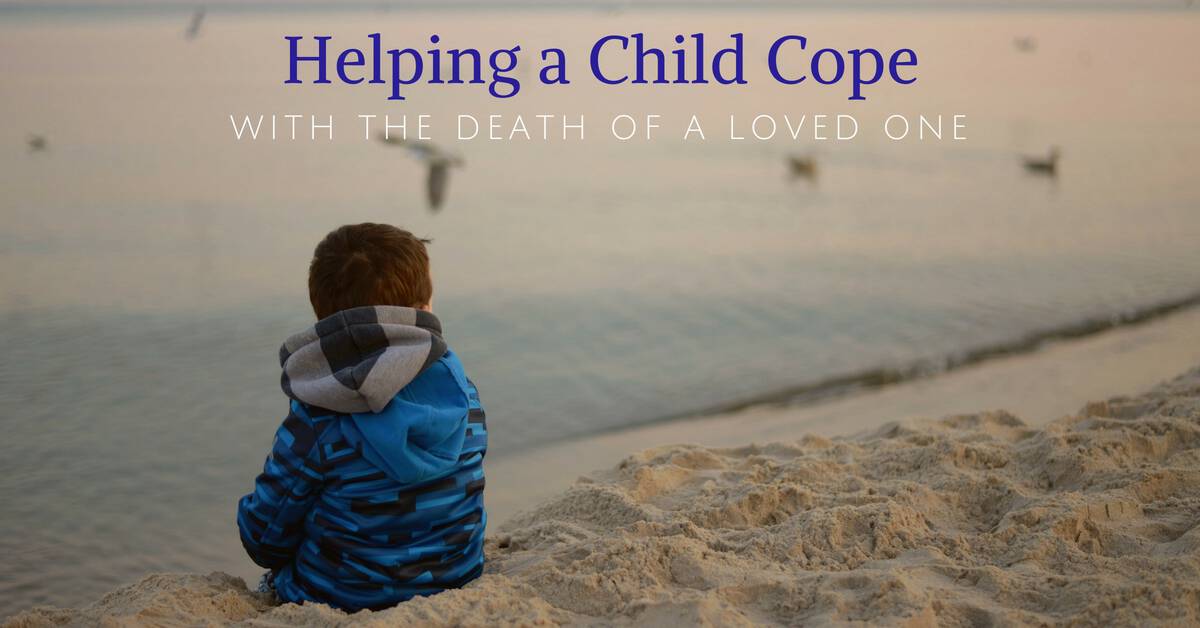It’s Not Too Late! New Year’s Resolutions for Parents and Kids They Can Stick to That Will Make Life Better
by Robert Myers, PhD in Family Building, Parenting, Well-Balanced Family

It’s that time of year again when we take time to reassess where we are in our lives and based on that assessment; make what we refer to as New Year’s resolutions. In most households, the holidays are filled with lots of activity and don’t leave much time for thoughtful reflection, so your resolutions are probably made in the spur of the moment on New Year’s Eve or New Year’s Day.
I also imagine that most of you reading this, like myself, have practiced this a few times. So how did it go? We often have high aspirations for ourselves for the coming year. However, we’re rarely; if we’re honest, able to keep those resolutions or even remember them down the road.
Our kids may also attempt to make some resolution or at least become resolved to change their behavior in the coming year in one way or another, but most likely are no more successful at achieving them than we are. The problem is that resolutions are not the same as goals. Resolutions are well-meaning statements of our aspirations for a better future rather than concrete plans for change.
Whether the person coming up with the resolution or set of resolutions is a child or an adult, they’re most likely going to end up being unfulfilled dreams or wishes. It doesn’t have to be that way. Changing a resolution into a goal with a likelihood of being attained requires a different strategy than merely attempting to “speak it into existence.”
Here are the key elements to set reachable goals:
- Goals should be based on realistic expectations.
- Goals need to be stated in a way that they can be measured.
- Goals require a plan for implementation usually requiring some smaller steps.
- Goal setting should include a timeline for completion.
- While not required, especially for personal goals, having someone other than you, or in addition to you, evaluating the level of success or completion is helpful. It’s sometimes referred to as “who is going to hold your feet to the fire?”
- Finally, working with a team or a partner rather than going solo also improves the likelihood of success. They can provide encouragement as well as useful suggestions along the way.
This year why not turn this ritual into a teachable moment? You could also turn the process into an opportunity to become more connected with your child or even better, more connected as a family.
If you’re interested in giving this a try, and I hope you are, I’m proposing a process as well as a few suggestions for some goals that are not only beneficial but achievable.
First, I’d encourage you to make this endeavor a “family affair.” If you agree, the first step is to discuss this with your spouse or significant other in your home, or others significantly connected to you and your child, such as a co-parent.
If you get buy-in as a result of the above, then the next step is to suggest to any of your children that are school age or above to join you in this adventure.
Once everyone is on the same page, set a time for a first meeting. The best time could be after dinner on the weekend or whatever works for you. Someone should assume the role of leader to get started. Let everyone share why they think this is a good idea and to go around sharing ideas for their own personal resolutions as well as some possible family resolutions.
After everyone has given their input, the next step is to suggest that each person share how they expect to achieve their resolution. Once all have shared, my suggestion is for you or whoever is leading to reminisce about one or two of your past experiences as a lead-in to opening the topic of wishes or desires versus goals.
The next step is to discuss the difference between resolutions and goals as mentioned above and introduce the concept of brainstorming and goal setting.
Brainstorming is a technique that has been used for years for problem-solving and goal setting. Here are the fundamentals of the brainstorming process:
- Define the problem you would like the resolution to solve. What happens? Why is it a problem? When does it happen? How often does it happen?
- Get “buy-in” from all concerned that the problem needs a resolution.
- Brainstorm possible solutions. Don’t judge–just make a list.
- Go over the solutions generated during the brainstorming session and look at the pros and cons of each. Is it realistic? Is it achievable within a reasonable time frame? Is it beneficial? Is it too easy or too hard? (We don’t want a goal that makes only a small change nor a goal that is unattainable).
- Select a solution you think will work. Develop a plan and give it a try.
- Keep track of success. Change your approach if necessary.
Let’s say your child states their goal is to better in school. That’s achievable, but “better” needs to be defined more specifically. For instance, “I will finish and turn in all of my homework” or “I will raise my grade in math from a “C” to a “B.” However, you would ask, “What will you need to do differently to make that happen?” or “Will you need some help from the teacher or me to make that happen?”
If the goal is to be ready for school on time, you might want to break the morning down into specific tasks such as brush teeth, get dressed, make the bed, eat breakfast, and check backpack. You could also ask questions such as “Are there things you could do in the evening to help, like put out your clothes or check your backpack before you go to school?”
If the goal is more behavioral such as, “I will be more kind to people” or “I will not yell or stomp my feet when I get angry” you could have them come up with behaviors they would use instead of the inappropriate behaviors. For example, “I will say please and thank you when I ask for something and give at least one compliment each day” or “When I start to feel angry, I will take deep breaths and think about something fun.”
Of course, parents may come up with similar goals such as, “I will stop and listen to you when you’re upset” or “I will do something fun with you at least three times per week.” Goals for the entire family could be increasing the number of hugs, listening to each other and asking questions before responding, or having a family game night now and then to have more fun with each other.
You can come up with a method to keep track of the behaviors targeted to be increased or decreased. The results should be reviewed periodically. Be sure to offer praise and encouragement for progress. If progress is not forthcoming, you can conduct another brainstorming session, to look for other ways to achieve the goal or to revise it.
The several examples of possible goals I shared above could be considered “small picture” goals. I want to suggest a few “big picture” goals that could be mutually shared family goals.
Decreasing the time spent on all forms of screen time is one goal you should seriously consider. It seems as if several times per month, new research or new guidelines are released suggesting that all of us reduce our screen time. This is due to both health and social issues.
Too much screen time can interfere with sleep and reduce activity level for adults and children, which leads to significant health and wellness issues. Being glued to the screen while at home leads to social isolation and a lack of connectedness, which is detrimental to both parents and kids. Research shows that lack of contact with others can cause children and teens to be more susceptible to anxiety and depression, and a lack of connectedness among family members results in more negativity within the home environment.
You can have a conversation as a family about the amount of time you spend using your digital devices and when and where you use them. Are you trying to multitask by keeping one eye on the screen and the other on something you’re working on, such as cooking dinner, or while doing homework with your kids?
How about mealtime? Is everyone in the group looking at their phone or tablet at the dinner table? Does the family sit around watching TV during dinner? Do you all eat at the same time? How about when you go out to eat? I cringe when I’m out at a restaurant and see a family sitting at the table with the kids busy playing games on their tablets, and the adults are intensely texting on their phones. I read recently that one food chain is now offering a free meal for families who don’t use their digital devices while in the restaurant.
Another goal that is frequently overlooked area for positive change is to increase the time children and adults spend reading books. Recent research has shown that we all learn and retain more information from reading books than we do from surfing the internet or using educational or informational apps.
Think about reading with your child. Either you read to them, or they read to you, or both.
Also, spend time looking through their book collection and consider getting some additional exciting books for them. Find out what they’re interested in such as dinosaurs, a sport, or astronomy, for instance. Also, ask about what characters they follow on TV or in video games and find books related to those characters. Another great resource is the children’s librarian at your local library. Get them a library card and visit the library together regularly.
Make a fun chart to keep track of how many pages or books they read. Praise and/or reward them for completing a book or a certain number of pages in a given period. While they’re in the process of reading a book or when they finish a book, ask them questions about what they learned. Ask if they liked it and if so, why. Taking the time to ask questions helps you know what type of books to get down the road as well as check out their ability to comprehend what they read.
Getting to bed in time to get a sufficient amount of sleep is another possible family goal. Doctors are discovering that when they ask children or adults about how much sleep they are getting each night, many of us are not getting the recommended amount of sleep based on our age range.
Also, many of us continue to use screen devices right up to the time we go to bed or continue screen time after we get into bed. Research has shown that for both children and adults, screen use should cease at least 30 minutes before going to bed. Failure to abide by that recommendation can lead to altered sleep cycles which can cause us to feel tired during the day, even when we’re getting the recommended hours of sleep.
Ask your doctor about how much sleep you and your kids should be getting each night. Your doctor can also provide information about sleep habits that can help you to get to sleep more quickly as well as to have a more restful sleep.
Finally, increasing the amount of time spent engaging in physical exercise may be something you should consider. Again, doctors are finding that both adults and children are not spending enough time on physical activities.
Thirty minutes per day is the minimum amount of time any of us should spend moving around and doing something physically exerting. Spending more time being physically active as well as engaging in aerobic exercise such as running, walking or riding a bike is even better.
Take time to observe how much time each of your children is spending being physically active each day when they’re at home. Ask them what they do during recess at school. Unfortunately, many schools have shortened the amount of time for these breaks, and quite a few have all but eliminated physical education. Of course, you should also keep a log of your own time spent on physical activity.
Once you’ve had a chance to assess the appropriateness of the time you and your children devote to physical activity daily and weekly, you may come to realize that this is another area in your life worthy of a resolution, or should I say, goal.
If you recognize that lack of sufficient physical activity is another area of opportunity for you and your family, you can raise this as an issue at your goal setting meeting or anytime you feel that works for you.
Increasing one’s activity level is not always an easy goal to set or keep for both adults and kids. In my counseling sessions with families, I often hear push-back on this suggestion from both parents and children. Lack of interest, as well as a lack of time, are the usual arguments against making any change.
An ever-increasing number of today’s kids don’t even think about being involved in any form of physical activity. When asked what they like to do for fun, kids often can go on and on about what video games they play.
Some kids become so hooked on video games that they rush through or fail to bring home school assignments. Others may sneak their tablet into their room and spend hours under the covers in their bed when they should be sleeping.
Some simply state that they’re not interested in sports or any other type of physical activity such as riding a bike or skateboarding. I’ve run into some teens who want to become “professional” video game players.
For some of you reading this, changing this behavior may seem as if it’s too hard to tackle. However, substantial research indicates that this goal shouldn’t be optional.
It may take some time to come up with reasonable solutions to this issue. You may have to resort to small steps taken slowly toward the goal. However, we find that when this a family goal and that some of the activities are done as a family or in pairs, the likelihood of attaining the goal becomes easier.
I wish you luck with your goals in the new year. I know if you take my suggestions, you’ll be happy with the results.
However, I also know that with all of the challenges most families face in attempting to achieve goals similar to those I suggested as well as others, you may feel like it’s just not possible for your family.
My new book, The Well-Balanced Family, provides useful information, successful strategies, and practical tools to make this possible for you and your family.





